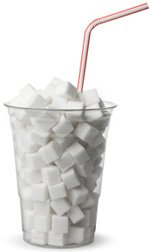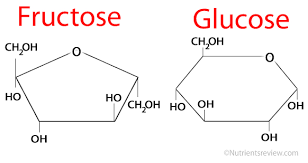Today’s consumers are concerned with the dietary and nutritional value of their foods. They want to know the sources of the ingredients in their food, if the ingredients are organic or GMO (genetically modified organisms), natural or synthetic, and how those ingredients compare to other alternatives. So manufacturer’s find the best way to appeal to buyers, and to compete with other products on the market. One way in which they do this is by using terms that agree with consumer ethos like “healthy” and “natural”. Consumers need to be careful not to be confused or misled by clever labeling tactics. For example, “gluten-free” is sometimes placed on items that are inherently gluten-free or on which the gluten-free status is irrelevant. As such, the use of “Evaporated Cane Juice” as an ingredient name has been controversial for some time now. There have even been lawsuit’s againts Wholefoods and Chobani because of it.
“Evaporated Cane Juice”
Recently the U.S Food and Drug Administration (FDA) has issued new guidelines. According to the FDA, “Evaporated Cane Juice” shouldn’t be used to label any food product that contains “sweeteners derived from the fluid extract of sugar cane.” Essentially, “Evaporated Cane Juice” is nothing other than sugar or syrups (cane syrup or molasses). Labeling it as a “juice” may lead to confusion among consumers as to the true nature of the ingredient. Especially since it is not a common or usual name for sugar, and “juice’ has an entirely different connotation.
 Manufacturers state that “Evaporated Cane Juice” is not the same as sugar or cane syrup. The difference between “Evaporated Cane Juice” and other sweeteners derived from the sugar cane plant is the process by which the final product is produced. In “Evaporated Cane Juice” the cane extract undergoes a filtration process first, then after separation from molasses, it undergoes a single crystallization step. Other common cane extracts are not filtered and undergo multiple crystallization steps involving melting and recrystallization. The bottom line is the degree of refinement. At the end of the day they are all composed of Sucrose.
Manufacturers state that “Evaporated Cane Juice” is not the same as sugar or cane syrup. The difference between “Evaporated Cane Juice” and other sweeteners derived from the sugar cane plant is the process by which the final product is produced. In “Evaporated Cane Juice” the cane extract undergoes a filtration process first, then after separation from molasses, it undergoes a single crystallization step. Other common cane extracts are not filtered and undergo multiple crystallization steps involving melting and recrystallization. The bottom line is the degree of refinement. At the end of the day they are all composed of Sucrose.
What is Sucrose?
Before we get into what sucrose is, we need to take a step back and discuss some biochemistry. You might be familiar with the artificial sweetener Saccharin, named after the greek word for sugar; Sakcharon. What you may not realize is that Carbohydrates are Saccharides and they are the most abundant class of molecules. Carbohydrates are made up of units known as monosaccharides or “simple sugars”. The most common simple sugar is Glucose. Another well-known simple sugar is Fructose. You can think of simple sugars as building blocks for more complex sugars known as disaccharides (two monosaccharides) and polysaccharides (many monosaccharides). Sucrose is a disaccharide found in plants; composed of Glucose AND Fructose.
Sucrose is Table sugar!
Sugars

Glucose and Fructose. Glucose and fructose are obtained in the diet from sucrose and other carbohydrates. They are the main source of energy in the body. Glucose is absorbed from the gastrointestinal tract into the bloodstream where it is metabolized in skeletal muscle and used as energy (pyruvate) . It is also naturally synthesized in animals through the process of glucogenesis, and stored by the Liver in the form of glycogen (the storage unit for glucose in animals). It is used to build triglycerides (oils) and fats in adipose tissue. Fructose is not made by animals but found naturally in fruit. Fructose is metabolized differently than glucose; mostly by an enzyme in the Liver. Interestingly, some people can have a genetic disorder in which they are deficient in the fructose enzyme, Type B aldase, and are therefore fructose intolerant. This however is not of great consequence as those who have the deficiency develop a distaste for sweet foods.
Lactose. Lactose is a milk sugar. It is made-up of the monosaccharides glucose and galactose. Lactose intolerance also occurs as a result of a deficiency in an enzyme—lactase. Fortunately, milk can be processed with lactase so that the lactose is removed, making it drinkable for those who find they experience intestinal discomfort when ingesting dairy.
Misnomer Labeling
“Evaporated Cane Juice” implies a watery liquid which further suggest a less concentrated sweetener, thus less sugar content. Using the term “Evaporated Cane Juice” instead of labeling it as sugar is misleading and my have significant health impacts, particularly for individuals for whom monitoring their sugar intake is crucial, such as with, diabetics.
Diabetes Mellitus (diabetes) is a chronic disease in which there exists a deficiency in the Insulin hormone or the action thereof. Meaning, there is either little to no insulin produced, abnormal insulin, a resistance to insulin (insensitivity to its action), or some combination of these. It is a common misconception that diabetes results from eating too much sugar. While consuming alot of sugar is NOT a risk factor for Diabetes, it is important for diabetics to reduce their sugar intake as the process in their bodies that regulates blood/plasma sugar levels is disordered.
Insulin and Sugar
Insulin is made, stored, and released from Beta-cells in the Liver. Insulin enables the body to use glucose by increasing the absorption of glucose in the body tissue. It also increases the storage of glucose in the form of glycogen, while decreasing glycogen metabolism. Furthermore, Insulin increases synthesis of fatty acids, inhibits fatty acid degradation, and aids in the synthesis of proteins from amino acids. Since muscle and adipose (fat) tissue need insulin to receive glucose, an absence of insulin or an inability to recognize its presence results in disorder of glucose metabolism.
When muscle and adipose tissue cannot uptake glucose, they begin to breakdown into their constituent parts — amino acids and fatty acids. This results in increased sensation of hunger and cravings for high caloric foods, and high blood sugar. The Kidneys are involved with regulating glucose levels in the body, and when the glucose levels in the body exceed what is normal, the excess is excreted in the urine. Symptomic of Diabetes is frequent urination, excessive thirst, and dehydration. Additionally, continued fatty acid degradation leads to the formation of Ketone bodies from free fatty acids. A build-up of Ketone bodies results in ketoacidosis. Ketoacidosis and dehydration, if left untreated, are fatal.
Type I Diabetes (Insulin dependent) is treatable with Insulin and Type II Diabetes ( non-insulin-dependent) is managed with a low-calorie diet and weight loss, as Type II Diabetes is correlated with obesity.
Summary
“Evaporated Cane Juice” is a euphemism for sugar. Due to refinement processes it may retain more minerals and other nutrients from the plant but, it is a crystalized precipitate from the extract of sugar cane, just like sugar. Listed as an ingredient, it means that sugar has been added to the product.

Great informative article
Can’t wait to read more of your work
LikeLike
Very enlightening and easy to understand, also well organized so anyone can get the gist. It’s a great pleasure reading this article. 👀👌
LikeLike
Thanks for the info about evaporated cane juice.
LikeLike
Hello. magnificent job. I did not anticipate this. This is a fantastic story. Thanks!
LikeLike
I’m glad to hear!
LikeLike